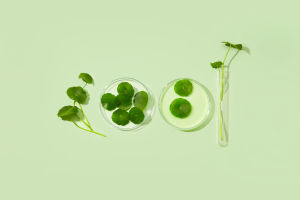Tulips, perennial herbaceous plants from the Liliaceae family, are renowned for their graceful posture and vibrant colors, often considered symbols of elegance and beauty.
The height of a tulip plant typically reaches over a foot, with leaves that are elongated and oval-shaped, in a soft, pale green color. Each plant generally has 3 to 5 leaves, arranged neatly, offering a sense of visual harmony and comfort.
The coordinated arrangement of the leaves enhances its aesthetic appeal.
The tulip bud extends from the base and eventually blooms at the top of the upright flower stalk, usually standing alone. Each flower consists of six petals, displaying a graceful, dignified posture. The shape of the flower resembles a goblet—simple, elegant, and brightly colored, capturing the eye instantly.
When closely observed, the tulip exudes a subtle charm, akin to a gentle spring breeze, leaving one feeling refreshed and captivated by its understated elegance.
Tulips are not only famed for their ornamental value but also hold significant importance in landscape design, the fresh-cut flower market, and floral art. As one of the world's most famous flowers, tulips are hailed as the "Queen of Flowers," cherished by flower enthusiasts worldwide.
Originally native to the Mediterranean region, tulips are now cultivated globally, with the Netherlands being particularly famous for tulip cultivation and production, representing the commercial flower industry.
Tulip gardens in the Netherlands attract countless visitors, and many renowned world parks and historical sites, such as the White House in the U.S. and the Louvre Museum in France, also feature tulips in their gardens, drawing numerous visitors every spring to admire these beautiful flowers.
The growth habits of tulips are quite unique. Tulips enter a dormant period during the summer, and in the fall and winter, they begin to take root and sprout new shoots without breaking through the soil. After undergoing a cold treatment in winter, tulips start growing rapidly, forming stems and leaves around early February of the following year (when temperatures are above 5°C), and blooming between March and April.
How 2 Billion Tulip Bulbs Are Produced and Harvested - Tulips Cultivation Technique in Green House
Video by Noal Farm
The optimal growing temperature for tulips is between 15 to 20°C. The differentiation of the flower bud occurs after the stems and leaves have withered when the bulbs are removed from the pot and stored in a cool place until summer. The suitable temperature for this process is 20 to 25°C; temperatures exceeding 28°C may adversely affect flower bud differentiation.
The bulbs of tulips are quite hardy and can safely overwinter outdoors in harsh climates if covered by thick snow. However, extreme heat poses a greater challenge; if summer arrives early and remains hot for extended periods, the tulip bulbs may struggle to survive the dormancy phase.
Regarding soil preferences, tulips favor humus-rich, loose, fertile, well-drained, slightly acidic sandy loam. They are not well-suited for alkaline soils and should not be planted in the same location as other similar plants for consecutive years.
Additionally, tulip flowers contain alkaloids that are toxic. Prolonged contact with the flowers may cause dizziness, and in severe cases, even poisoning. Thus, it is advisable to avoid long periods of proximity to tulips, especially in enclosed spaces, to prevent potential health risks.
While the beauty of tulips is enchanting, it is essential to maintain a proper distance and environment when admiring them to ensure safety and well-being. This unique flower, with its captivating appearance and rich historical and cultural background, continues to draw the attention of countless flower lovers worldwide.


